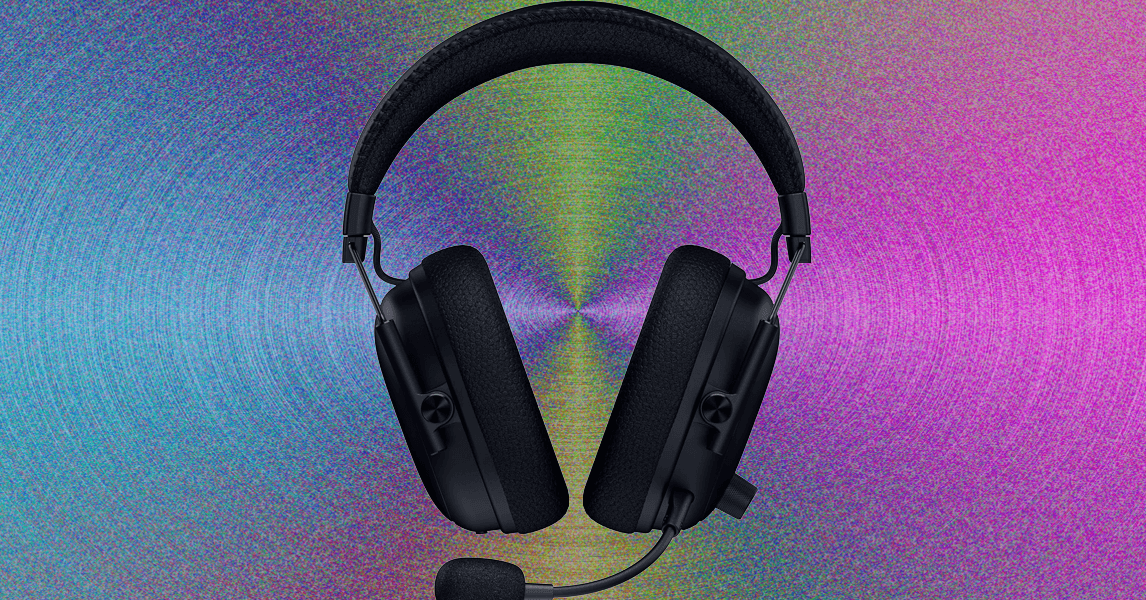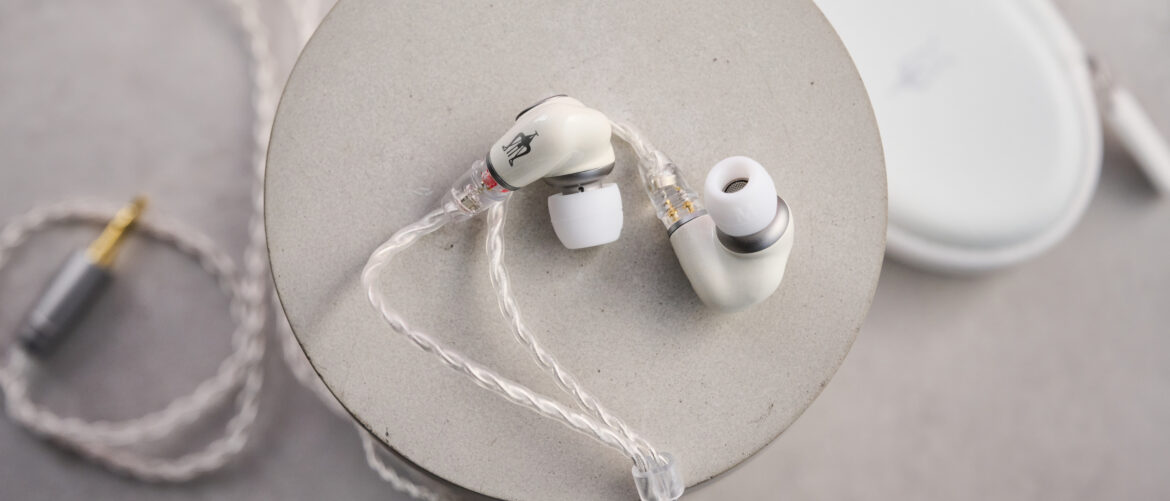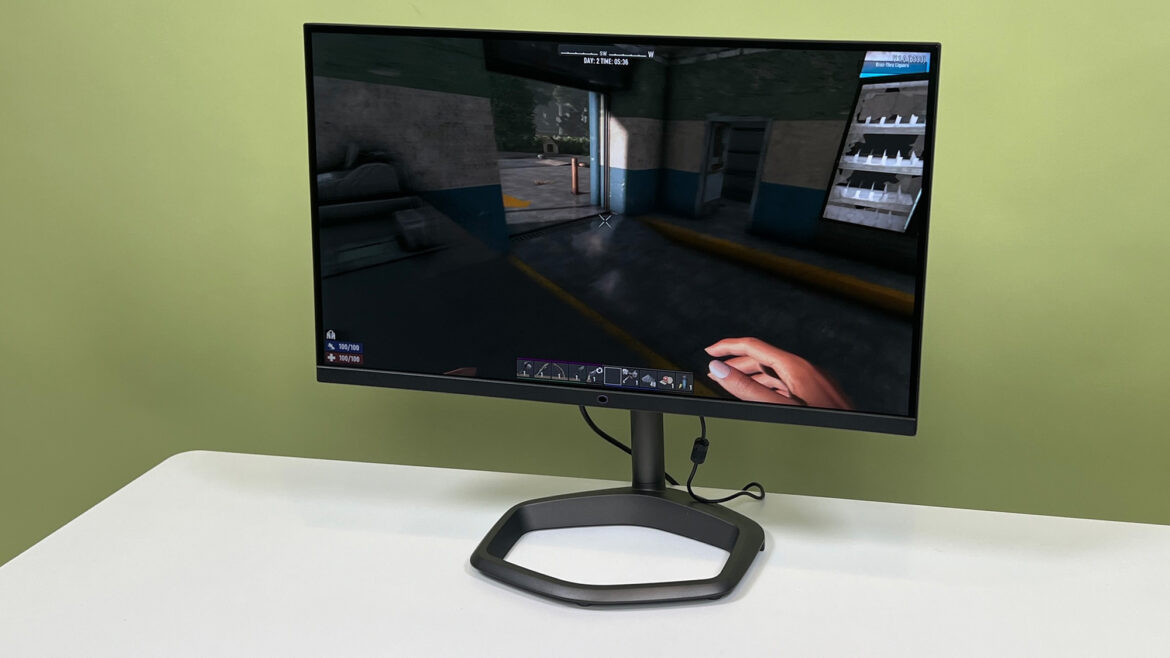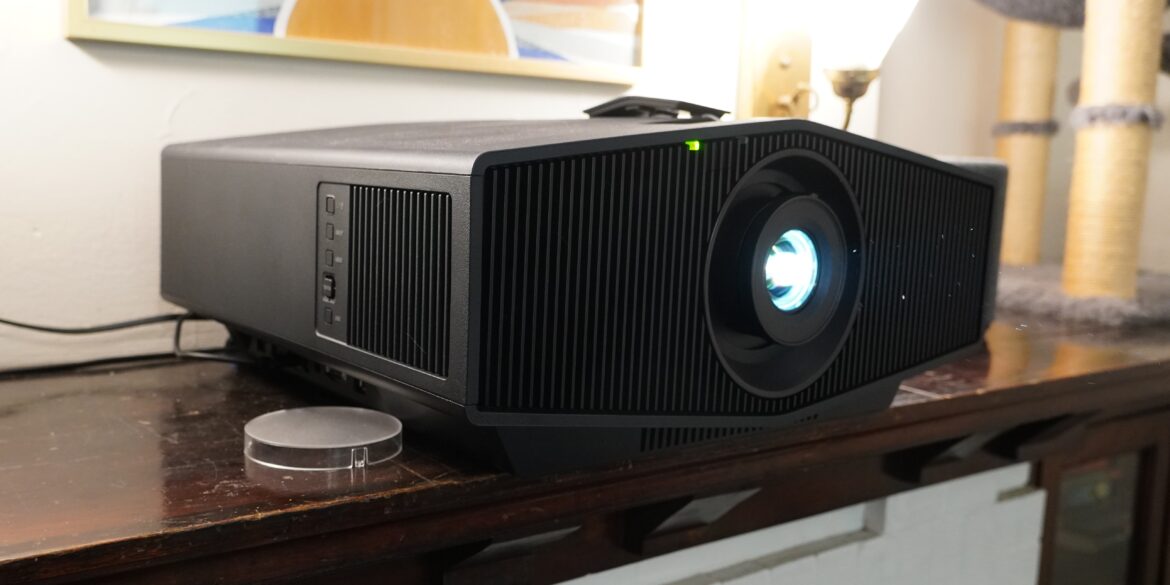Why you can trust TechRadar
We spend hours testing every product or service we review, so you can be sure you’re buying the best. Find out more about how we test.
Govee Table Lamp 2 Pro x Sound by JBL review
The Govee Table Lamp 2 Pro x Sound by JBL is a smart lamp and Bluetooth speaker combo that enables you to switch up the vibe in moments.
Available to purchase directly from the Govee website or at Amazon, the Govee Table Lamp 2 Pro x Sound by JBL has a list price of $179.99 / £169.99. While the price is certainly on the steep side, if you’re already a big Govee fan and want to save space by incorporating a speaker into your smart light setup, this would be a good way to go about it.
Having said that, the Govee Table Lamp 2 Pro x Sound by JBL already been subject to a $20 / £20 discount in the Govee Fall sale, which sweetens the deal a little. That’s despite the fact that it has only been available in the US for around 11 weeks, and less than a week in the UK, at the time of writing.
(Image credit: Future)
Being so used to the Govee Table Lamp 2, which I happen to have two of, the Govee Table Lamp 2 Pro x Sound by JBL looks a little on the chonky side. This is understandable, considering it’s packing a speaker and a 5,200mAh rechargeable battery, which can provide up to four and a half hours of playback if the volume and brightness are set to fifty percent.
- Govee Table Lamp 2 Pro x Sound by JBL at Amazon for $179.99
There’s a notable difference between the US and UK models when it comes to the power cable. The connector is set at a 90-degree angle in both cases, as the power port is located on the bottom of the lamp, but the US uses a small DC connector, and the UK uses USB-C.
More importantly, the cable for the US model is moulded to a US plug, so you can just plug and play; but in the UK, a USB-C cable is all that’s included, so I needed to source an adapter with a minimum of 35W for it to run efficiently. The first adapter I had to hand turned out to be too low-powered, and the lamp was clearly unimpressed.
(Image credit: Future)
Getting the Govee Table Lamp 2 Pro x Sound by JBL synced with the app and with the WiFi networks in the office and at home was a quick and simple process. There are two separate Bluetooth connections, one for the lamp itself and one for the speaker. I found this a little inconvenient at times, as it seemed I needed to reconnect the speaker in my phone’s Bluetooth settings whenever I’d been out of the room. But overall, it makes sense that it’s set up this way, as one may want to listen to music on their headphones while still enjoying the features of the lamp.
(Image credit: Future)
There are two elements of the Govee Table Lamp 2 Pro x Sound by JBL’s design that provide eye-catching lighting effects. These are the main body of the lamp, as you’d expect, but also the base, thanks to its clever reflective design. Both elements can be used independently or together, so you can have your lighting effects as stand-out or as subtle as you’d like.
The control panel on the top of the Govee Table Lamp 2 Pro x Sound by JBL was simple to use, with a push power button and four touch buttons for the speakers’ volume controls, playing and pausing, and a button for cycling through nine customizable presets.
(Image credit: Future)
My favorite way to control the Govee Table Lamp 2 Pro x Sound by JBL – and all the Govee products I’ve tested, actually – is by taking advantage of the voice control via my Echo Dot (5th Gen) or hopping onto the feature-packed Govee Home app.
If you’ve already read some of my other product reviews, such as the highly rated Govee Neon Rope Light 2, you’ll already have some idea of how fond I am of the Govee Home app.
Along with the run-of-the-mill power, brightness, and volume controls, it also boasts over 100 preset scenes, with themes ranging from the ocean to the universe. The Govee Home app offers opportunities to get creative with lighting effects, too, with a finger sketch feature that allows you to decorate the canvas with random colors or drawings before choosing a motion setting and speed, as well as an AI effect generator.
Image 1 of 4
(Image credit: Future)(Image credit: Future)(Image credit: Future)(Image credit: Future)
One small niggle I have stems from the preset audio that plays by default when some of the scenes are selected. I found some of them to be somewhat irritating, especially if they caught me by surprise when cycling through the default presets using the onboard controls. Fortunately, they can be disabled in the app, but only one at a time, so I had to go through and turn them off for all of my favorite scenes that were afflicted.
(Image credit: Future)
The audio quality was as I expected from a JBL speaker, by which I mean it was a solid performer. The treble sounds clean, and I could hear a good level of definition in the high-pitched percussion in the background of Sunny Days by Kolter. The bass lacks some impact, but it still has a good weight to it and isn’t bad going, considering the price. Unless you happen to be an audiophile, you’ll probably be perfectly happy with the audio quality on offer here.
The Dynamic Music feature added some fun when listening to music, especially the Gridding and Ripple effects, and was enjoyed by everyone in my office. I did notice they can struggle to hit the right notes if the track has a lot of different elements, but it’s nonetheless a fun dynamic effect, especially when paired with bass-heavy tracks.
(Image credit: Future)
Overall, the Govee Table Lamp 2 Pro x Sound by JBL offers eye-catching and day-brightening lighting effects and a satisfying-sounding speaker for the price. So, if you love the look of the Govee Table Lamp 2 and want a solid speaker to listen to tunes, podcasts, or audiobooks, then you’ll be happy wth the Govee Table Lamp 2 Pro x Sound by JBL.
If you’re in the mood to check out more ambience-altering lighting, then why not take a look at our pick of the best smart lights?
Govee Table Lamp 2 Pro x Sound by JBL review: Price and specs
Swipe to scroll horizontally
Price
$179.99 / £169.99
Model
H6020
Colors
Lamp Body: RGBICWW, Base: RGBIC
Lumens
600
Dimensions
6.1 x 6.1 x 10.1 inches / 18.9 x 18.9 x 34cm
Connectivity
2.4GHz Wi-Fi, Bluetooth
App
Yes
Control methods
Alexa, Google Home, Matter, IFTTT, Apple Watch, Razer
Speaker
Sound by JBL 2.5-inch 500cc full-range speaker
Additional features
Rechargeable battery
Should I buy the Govee Table Lamp 2 Pro x Sound by JBL?
Buy it if…
Don’t buy it if…
Govee Table Lamp 2 Pro x Sound by JBL review: Also consider
How I tested the Govee Table Lamp 2 Pro x Sound by JBL
- I tested the Govee Table Lamp 2 Pro x Sound by JBL for a couple of weeks
- I tested the different features and customizable settings
- I observed its performance as a smart light and as a speaker
I used the Govee Table Lamp 2 Pro x Sound by JBL on my desk and next to my bed for a couple of weeks.
I followed the setup process on the Govee Home app and explored its features, testing how different scenes looked, and used the creative features to create my own.
I tested the audio quality by listening to different genres of music and bumping up the volume to assess the output at higher levels.
Govee Table Lamp 2 Pro x Sound by JBL: Price Comparison










